While RockShox and Fox have been dominating the suspension market in recent years, Manitou has been beavering away on a host of new models for a range of disciplines, including this rather special Mezzer fork that’s available for both 27.5in and 29in wheel sizes.
The 2019 Manitou Mezzer Pro enduro fork retains its famous and distinctive rearward-facing fork arch but gets new tech that includes a Dorado Air spring and Infinite Rate Tune (IRT).
After some late nineties and early noughties successes — does anyone remember the Millennium and X-Vert forks or the upside-down Dorado? – Manitou faded, but it’s back, and the Mezzer has the RockShox Lyrik, Yari and Pike, as well as the Fox 36 firmly in its sights.
Manitou Mezzer Pro specifications and details
Like the rest of Manitou’s current range of forks, the new Mezzer Pro uses its reverse arch design. This design is claimed to make the fork as stiff as a comparative front-arched fork, but using less material, therefore making it lighter. Manitou claims that a rear arch isn’t as tall as a front-arch application, which is how it can use less metal.
The chassis is built around 37mm stanchions – which are larger than enduro offerings from both RockShox and Fox at 35mm and 36mm respectively – and the fork is available in both 27.5in and 29in wheel sizes with four offsets: 37mm and 44mm for the 27.5in fork, and 44mm and 51mm for the 29er.
My 160mm travel, 51mm offset 29er model weighs 2,093g, including mudguard and axle with a 185mm steerer tube.
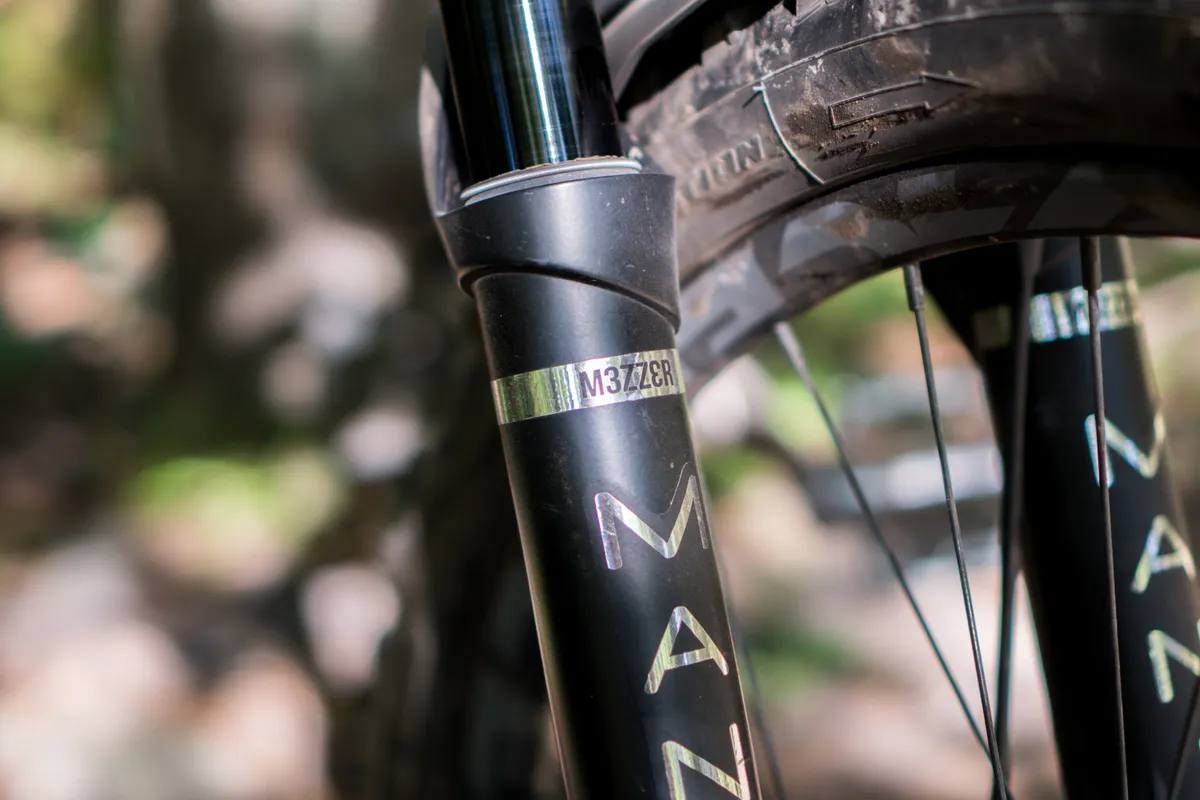
Travel is internally adjustable from 140mm to 180mm in 10mm increments, with spacers supplied for both wheel size forks. It has 15 x 110mm Boost axle spacing that uses a Hexlock SL2 axle, with only one 6mm Allen key required to tighten it – saving weight over the previous version. The forks have a hollow crown which saves further grams.
SKF wiper seals are supplied on the fork, which Manitou claims are super-low friction.
The Mezzer is also supplied with a bespoke, flexible front mudguard that mounts with three Allen key bolts and it’s possible to route the front brake cable on either the rear or front of the fork.
With the mudguard fitted you can squeeze in a 2.6in wide tyre and without it there’s space for 2.8in rubber.
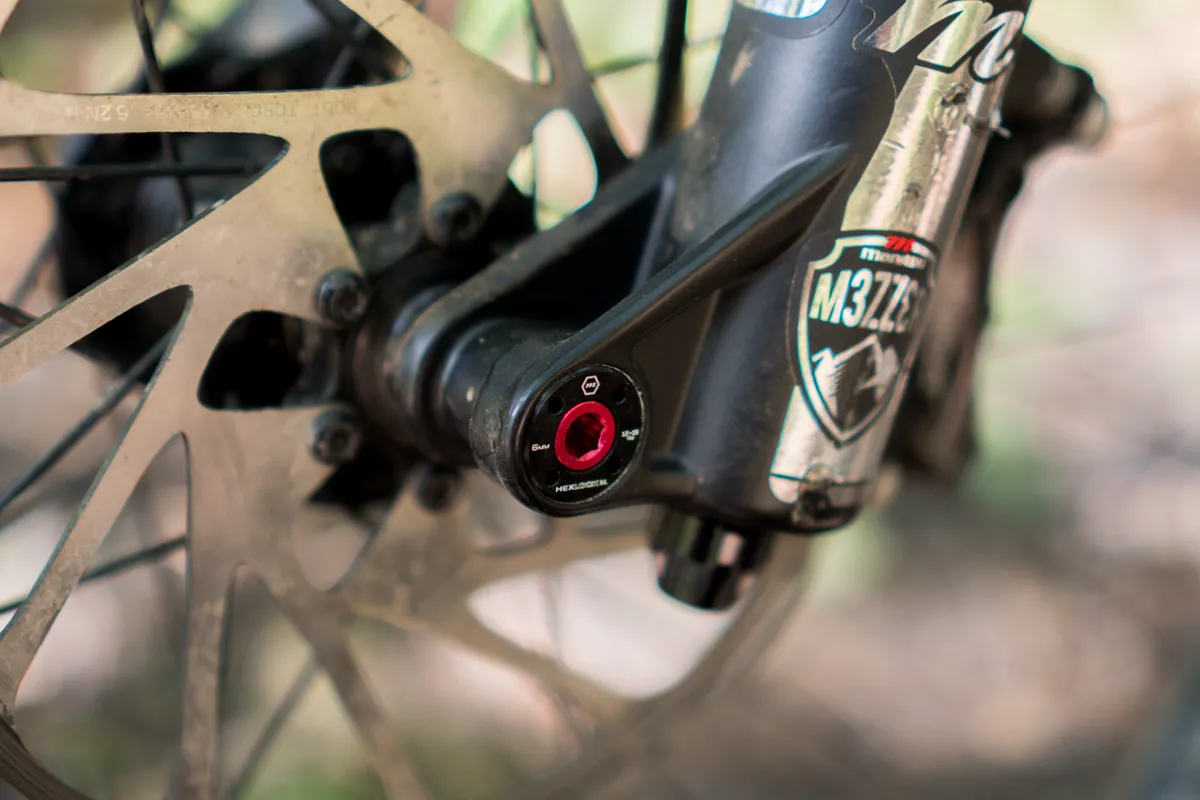
The fork is controlled by Manitou’s MC2 damper, which has externally adjustable high- and low-speed compression. Turning the high-speed adjuster loads the high-speed shim stack with a spring and the pressure created determines the oil flow velocity required to activate this shim stack, transitioning from the low-speed stack.
The low-speed adjuster works in a similar way but, like most forks on the market, the low-speed can change the oil velocity required to open the high-speed stack. Manitou cautions this in its set-up guide.
The cartridge uses a sealed bladder system, versions of which are used on many forks these days. This system claims to separate air from the oil internally in the fork, helping to improve damping consistency, and there’s a blow-off valve to prevent the bladder from over-pressurising and rupturing.
It’s specced with TPC rebound damping, which has a two-stage shim stack to help separate high- and low-speed rebound damping. However, there is only one adjuster on the outside of the fork that controls low-speed rebound.
There’s also a hydraulic bottom-out that causes the fork to ramp up the last 30mm of travel to help reduce harsh bottom outs.
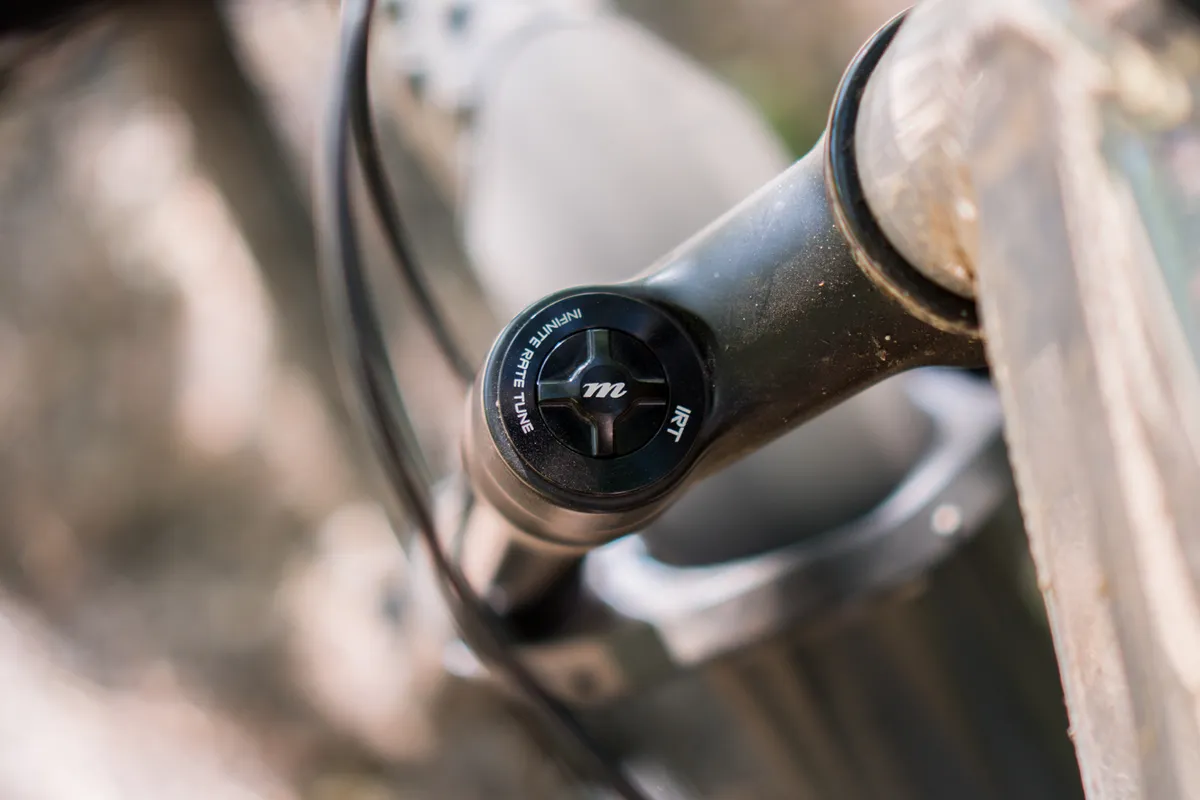
Even with all of this technology, there’s still more, and the Dorado Air spring and Infinite Rate Tune (IRT) are probably the most revolutionary features on the new Mezzer.
Manitou claims the Dorado Air is its lightest spring technology that’s made from aluminium, using a DU bushing and custom seal to help reduce friction. The negative and positive air chambers are filled at the same time from a valve on the bottom of the fork, equalising automatically.
It has a large negative air chamber that’s optimised for each travel and wheel size setting. The negative air spring is fully sealed, which Manitou claims stops the forks from sucking down in their travel when lower pressures are run.
There’s also IRT adjustability. This lets the rider control how the fork handles in its mid- and end-stroke, making the fork more or less progressive. The IRT adjuster works independently from the fork’s standard spring rate and means the two can be tuned in isolation.
It’s tuned using air pressure: increase air pressure in the IRT and the fork becomes more progressive, reduce it and it’s more linear. The IRT chamber’s volume reduces as the fork compresses, with the main positive and negative air chambers altering its size as they compress deeper into their travel.
As the IRT decreases in volume this increases its air pressure causing it to be harder to compress further. This resistance to compression — or increase in air pressure — equates to a progressive spring curve that gradually gets more supportive the deeper into its travel the fork compresses. It’s clever stuff.
Manitou Mezzer Pro set up
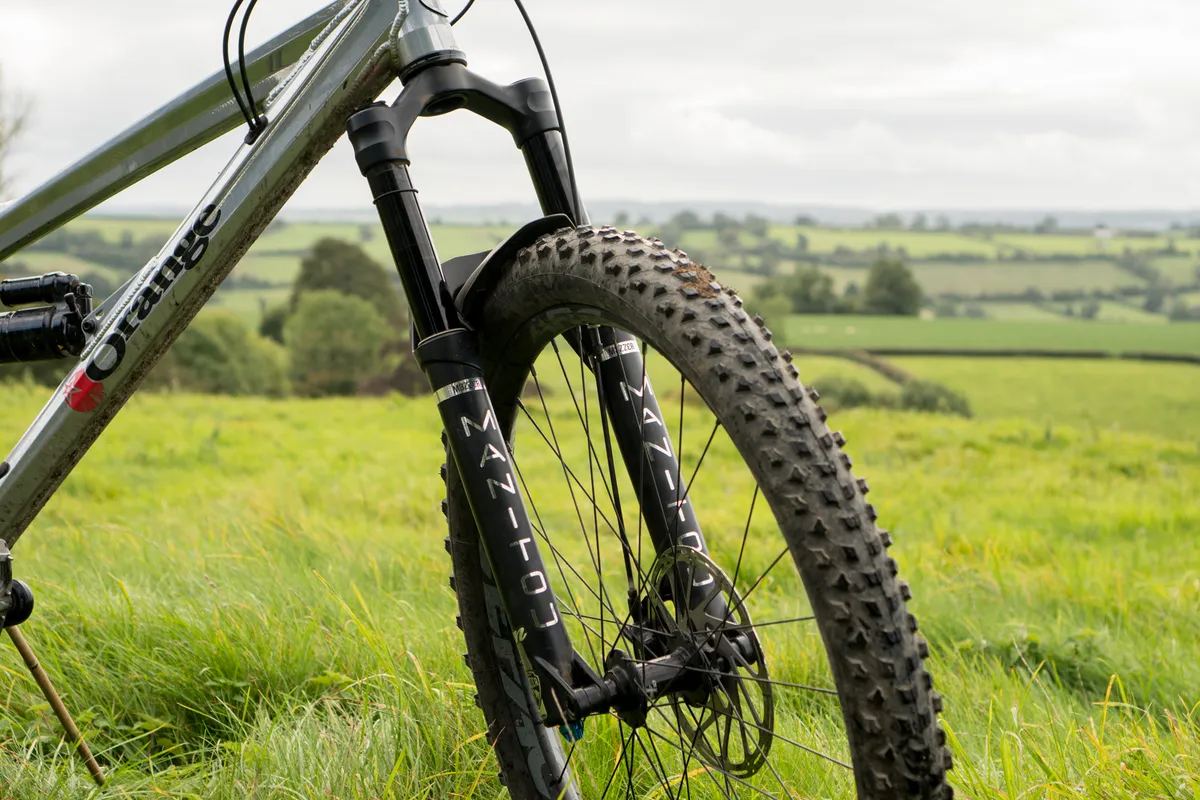
Setting up the Mezzer’s compression and rebound wasn’t particularly difficult and the guide supplied by Manitou provided good base settings to work from. In the end, I settled on no high-speed compression, -5 of 10 clicks of low-speed compression and -4 of 10 of rebound adjustment.
Ending up midway in the fork’s rebound and compression adjustment leaves plenty of wiggle room should conditions change and the settings need altering. Not maxing out at either end of the fork’s adjustability should keep it working better, too.
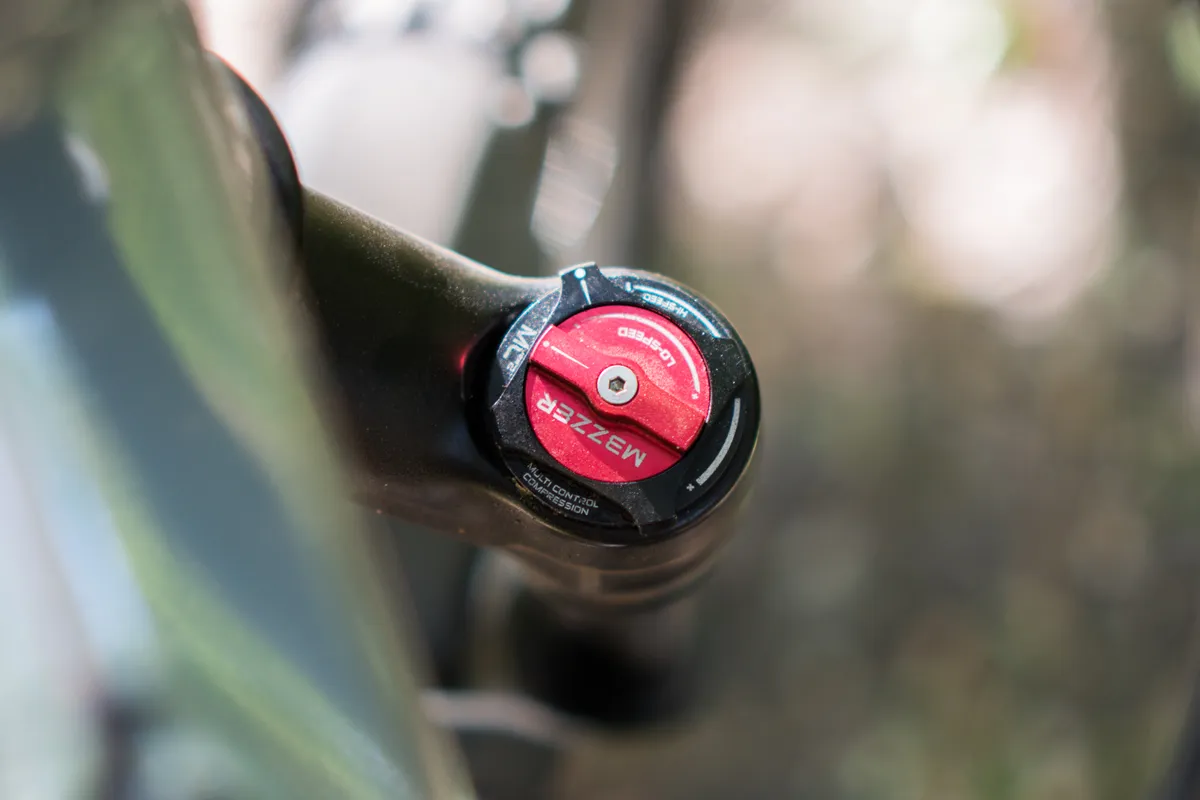
Setting up the fork’s spring was a little tougher, however. Importantly, Manitou states that the IRT chamber needs to be inflated first to the recommended 84 to 87psi for my 75kg. After inflating the IRT from the top of the fork, you should then pressurise the Dorado Air spring that’s filled from the bottom.
Manitou suggested I run a low 52 to 55psi in the main air chamber. With these settings the fork felt exceptionally plush and supple but sagged more than I would have liked, making the front end of the bike feel lower than it should.
While there was impressive bottom-out resistance for the level of sag and suppleness on offer, I wasn’t satisfied with how the fork was making my bike sit. I even went as far to question the Mezzer’s axle to crown height, comparing it to a 160mm travel Lyrik. It turns out they’re identical at 569mm, which led me to think that Manitou’s air spring set up guide might not be correctly calibrated.
Increasing both IRT and Dorado Air spring pressure incrementally, I ended up with 100psi in the IRT — a pressure Manitou recommends for a rider weighing over 100kg — and 70psi in the Dorado Air, once again a pressure recommended for someone in excess of 100kg.
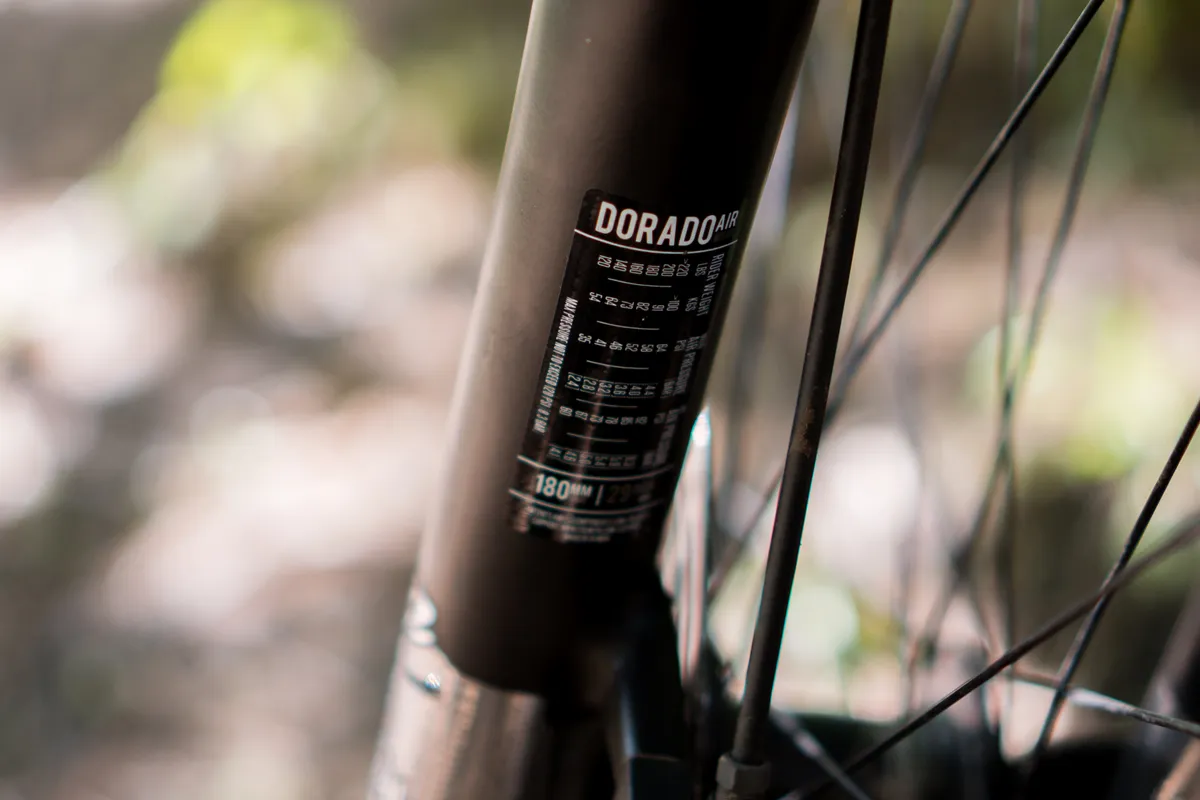
These settings seemed to create the perfect balance of small bump compliance, mid- and end-stroke support, bottom-out resistance and sag. And while the air pressures are much higher than Manitou’s recommended settings, they’re still well below the maximum pressures you can run. So, if you’re a heavy or aggressive rider, don’t worry because the Dorado Air spring can be pressurised up to 120psi and the IRT can go up to 200psi.
When I asked Manitou for comment about my experiences setting up the Mezzer, its design engineer, Nick Pye, said that “While most riders fit nicely into [certain] criteria there are some outliers that say [a fork’s recommended set up] is too soft or too firm, which all comes down to personal preference or riding style; less aggressive riders like more sag (30%)/more linear rate, more aggressive riders prefer less sag (15%)/more progressive rate; some ride it as an enduro fork, others ride it as a trail fork.
“Our experience is that it is very difficult to satisfy all riders of a given weight with a single pressure setting. But at the same time we do not want to overload customers with extraneous tables of set-up pressures for various weights and riding styles. So, as a result, we land on an average pressure to satisfy the majority of riders.
“As mentioned, the benefit of the IRT system is it that it can be tailored to any rider’s preference with a bit of experimentation.”
I am also inclined to concede that I am an aggressive rider and do like a firm bike, particularly on the front end. The set-up difficulties I encountered might not be an issue for other people.
Manitou Mezzer Pro performance
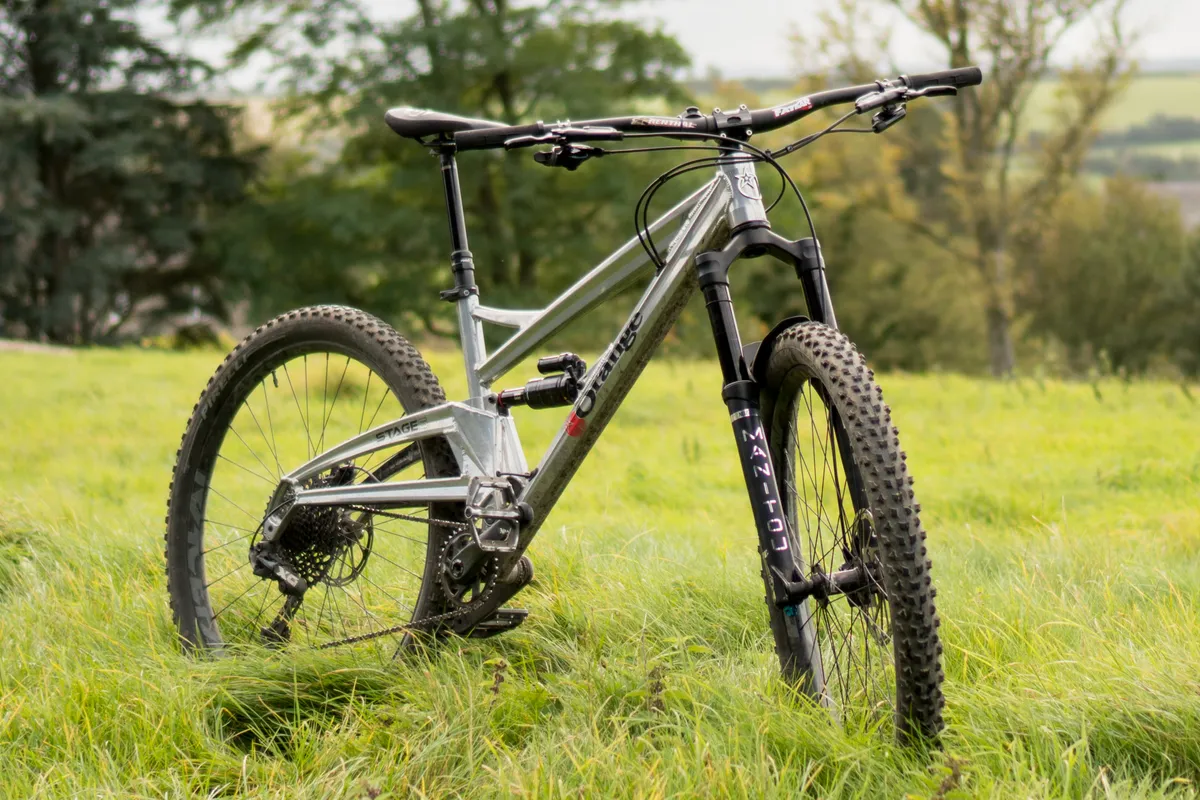
Once the forks were set up to suit my preferences, the first glimmers of their impressive performance really started to shine through.
They’re particularly plush, supple and compliant at the start of their travel, comprehensively absorbing the smallest bumps on the trail without any fuss.
In fact, this level of comfort was so impressive that I was convinced there would need to be a payoff with less support deeper into the fork's travel — as is the case with other forks on the market.
This supple and ready-to-compress feeling reminded me of the sensitivity given by coil-sprung forks and pretty much eliminates hand fatigue from small vibrations. This feeling of comfort didn’t fade or diminish over particularly long descents either.
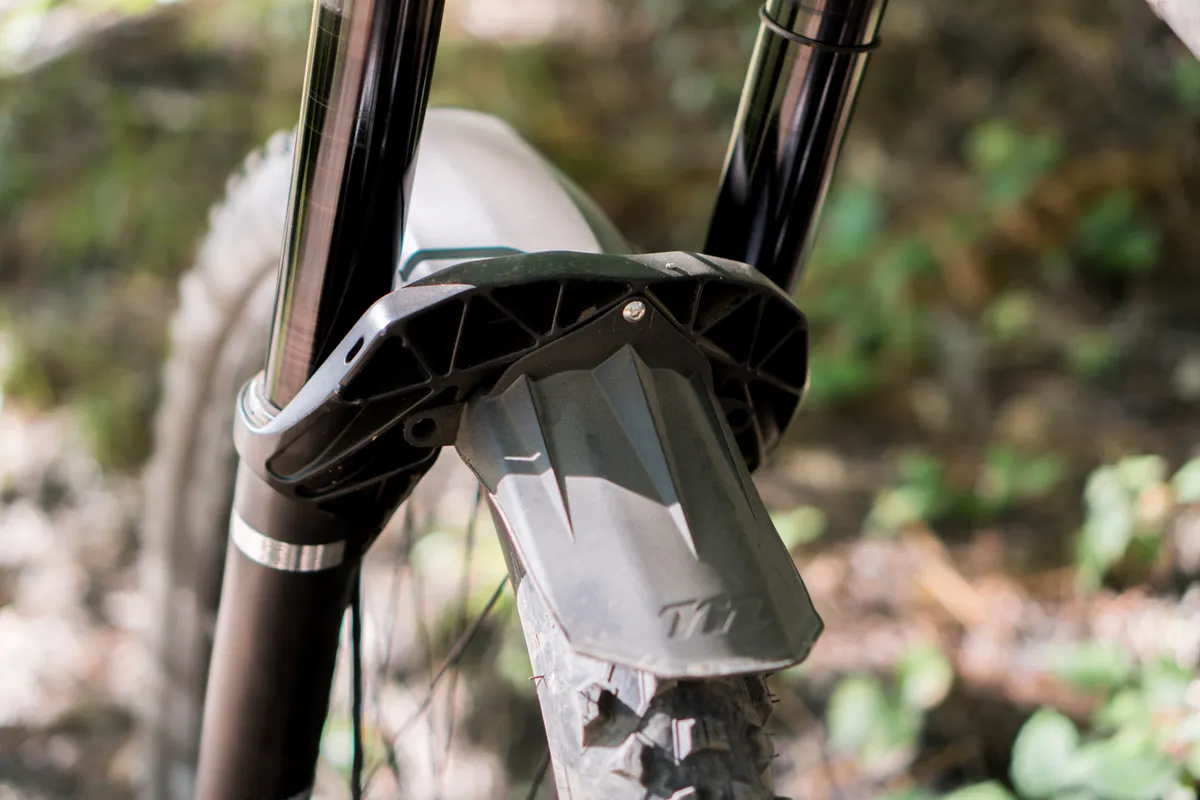
Over faster, chattery terrain, the fork was always ready to absorb the next bump and it never felt like it was packing down on quick successive bumps.
The high-speed compression damping — although adjusted to fully open — was light enough to stop the majority of the trail’s bumps transferring into my hands, which, when coupled with the air spring’s initial sensitivity, is a top combination.
This smoothness didn’t cause the fork to wallow or feel too soft either. Deeper into the travel, particularly through compressions or in turns, there’s loads of support created by both the IRT and low-speed compression damper. This means you can load the front of the bike, riding as aggressively as you dare.
The feeling of support was particularly pronounced in steep, banked switchback turns when the fork is loaded with your weight and at an angle turning around the corner. In one instance, I got the turn wrong and was expecting the front wheel to tuck underneath itself, propelling me over the bars. But the fork’s spring and low-speed compression supported my miscalculated weight distribution impressively, allowing me to ride out a scenario where I would normally have crashed.
The support given was also down to the fork’s chassis. It feels very stiff when it needs to — during torsional loading such as cornering – but stays supple enough to reduce front wheel deflection over bumps, which can make your hands fatigue quickly.
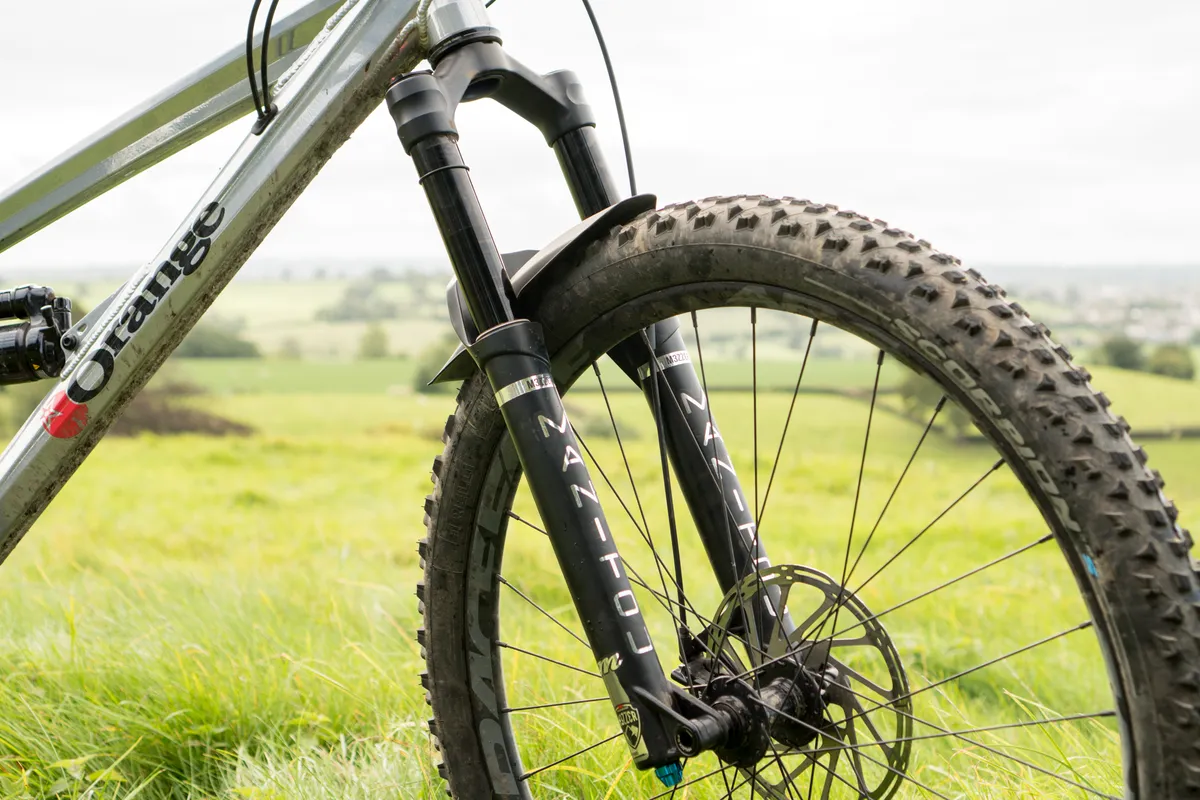
Along with its beginning-stroke smoothness, small, square bump compliance and mid- and end-stroke support with good bottom-out resistance, the Mezzer also manages to handle successive, big and harsh high-speed compressions.
For example, root steps or small consecutive drops with flat landings are dispatched with total competency and the fork never felt overwhelmed or like it was bogging down in its travel.
If you add in secondary bumps, like small roots or rocks, while the fork is already loaded it still didn’t seem to falter, maintaining total composure and letting you get on with riding your bike.
Manitou Mezzer Pro bottom line
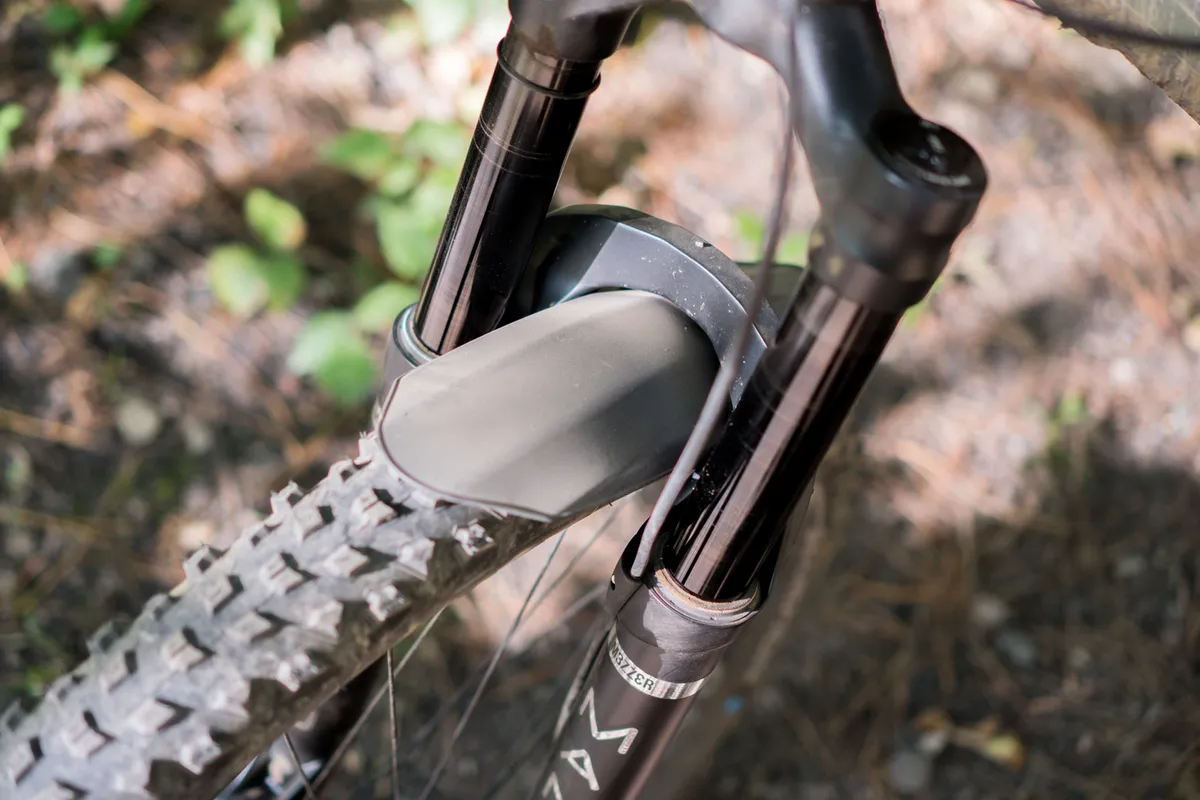
Manitou has managed to blend all of the most important elements required to make a top performing fork into one package. It’s got great mid- and end-stroke support with superb bottom-out resistance. This isn’t at the detriment of stroke suppleness either. The compression and rebound damping on offer is easy to tune and works well with the fork’s air spring and the IRT adjustability.
That said, Manitou’s Dorado Air and IRT set up charts don’t quite tally with my real-life experiences and getting the balance between air pressures can be tricky. Once you’ve nailed it though, it performs amazingly.
If you can see beyond the unusual looks and some setup difficulties, the Mezzer simply has to be a contender for your cash if you’re considering a Fox 36, Pike, Lyrik or Yari.
Product
| Brand | Manitou |
| Price | €1050.00, £899.99, $999.99 |
| br_whatWeTested | 160mm travel, 29in wheel, 51mm offset Manitou Mezzer Pro |
| Weight | 2093g |
Features
| Spring type | air |
| Lockout | no |
| Wheel size | 29in_700c |
| Axle | 15mm |
| Damper adjustments | High and low speed compression, low speed rebound |
| Offset | 51.0000 |
| Offset | MILLIMETER |
| Travel | 160.0000 |
| Travel | MILLIMETER |
| Stanchion diameter | 37.0000 |
| Stanchion diameter | MILLIMETER |
| Features | Dorado Air spring and Infinite Rate Tune (IRT) air chamber |

